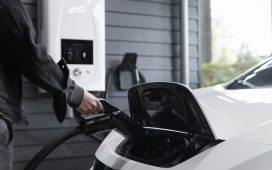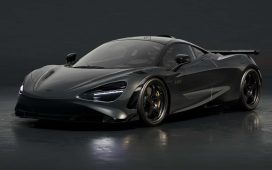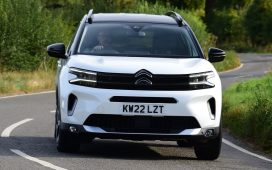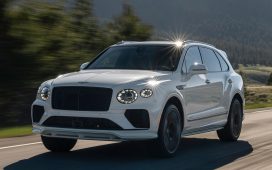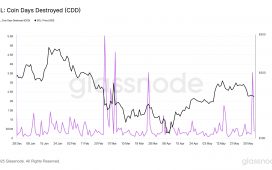Electric vehicle sales have accelerated after a soft start to the year, on the back of new EV offerings and aggressive pricing. The industry faces a fresh round of competition as Tesla (TSLA) fights for a return to growth, while General Motors (GM), Ford (F), Jeep-parent Stellantis (STLA) and others move toward cheaper new models aiming to pry open the mass market for electric cars.
↑
X
If Tesla Is The Most Valuable Car Company, Why Are Hybrids Outselling EVs?
A focal point of that move is the market for small, electric sports utility vehicles, a segment where sales are accelerating. Many mainstream consumers reject all-electric cars as expensive toys or wasteful money pits. Yet automakers are targeting the compact SUV/EV segment in order to win over more of those holdouts, and to move EVs beyond early adopters to the “early majority” — and deeper into the mass market.
So a Chevrolet Equinox offering more than 300 miles of range for under $30,000 is expected by year end, with Chevy-parent GM promising it will become “an affordable game-changer.” Ford is aiming for a similarly affordable SUV EV by 2026. Jeep is targeting the $25,000 price point, with an SUV EV set to arrive within the next few years. Tesla says it will start producing affordable models in the first half of 2025, perhaps even reaching CEO Elon Musk’s $25,000 goal, at least after tax credits.
Whether those models actually arrive and deliver on promises is a toss of the coin.
The Economics Of A Sub-$30K EV
Automakers in the U.S. continue to scale back their EV growth plans. Gasoline-electric hybrid cars are proving far more popular this year. All-electric vehicles languish on dealer lots, forcing GM, Ford and others to shift more to hybrids. That isn’t stopping them from trying to pull off an affordable — yet profitable — electric car.
“We believe smaller, more affordable vehicles are the way to go for electric vehicles in volume,” Ford CEO Jim Farley said on a July 24 earnings call. “In internal combustion engines, a business we’ve been in for 120 years, the bigger the vehicle, the higher the margin. But it’s exactly the opposite for EVs.”
Not everyone agrees. “Looking at the economics of a lower-cost, mass-market EV,” said CFRA Research equity analyst Garrett Nelson, “they are going to be money losers for these companies.”
Nelson dismissed the idea of an unsubsidized $25,000 electric car that can generate profits. He said it is “just not realistic” given sharp cost inflation after the coronavirus pandemic.
Even a Tesla EV at this price point would bleed money, Nelson said. However, he expects Tesla’s Full Self Driving software subscriptions to help it produce profits on such a vehicle over time.
“For other EV manufacturers, with higher unit costs and without a compelling software product such as FSD, the economics of a $25,000 EV are even more challenging,” he told Investor’s Business Daily. Both GM’s Super Cruise and Ford’s BlueCruise automate select driving tasks.
The Heart Of The Electric Car Market
The sub-$30,000 pure battery electric vehicles, or BEVs, are all expected to target what GM calls “the heart of the largest and most competitive segment” in the automobile market — compact SUVs.
The lack of affordable EV offerings in that core market has been a huge barrier to getting BEV adoption beyond early enthusiasts to mainstream, mass-market Americans. That has made cheaper electric SUVs and crossovers the new bull’s-eye for U.S. EV makers, down to startups Rivian (RIVN) and Lucid (LCID).
“It’s about where the sweet spot is for demand,” said Dan Ives, an equity analyst for Wedbush Securities. “It’s similar to what we are seeing in China, where when you get to these price points, that is where you can drive mass demand, and you can go after a subset of the market that hasn’t been (sold) yet on electric vehicles.”
When — and if — they arrive, the new, lower-priced products would face as-of-yet untested EV demand. The result may decide whether or not traditional automakers have an electric future. Lower price-point EVs could determine the outcome of Tesla’s battle against BYD (BYDDF), its Chinese archrival that is threatening a global ascent after successfully pumping out affordable electric vehicles at home. And they could allow Rivian and Lucid to survive, and possibly thrive, instead of going the way of bankrupt startup Fisker.
For now, many Americans remain skeptical about electric vehicles, mainly due to charging and cost issues, but also because of the unfamiliar new technology.
A Humbling Journey
Automakers say they remain committed to the EV transition, but their actions often speak differently. Their EV hopes seem to be confronting ugly earnings, and economic and political realities.
On July 23, General Motors delivered a Q2 earnings beat-and-raise. But GM and Ford both warned of lower or potentially lower adjusted earnings in the second half of 2024 as they ramp up the production and sales of electric vehicles.
In the first half of 2024, Ford’s EV business remained a drag on earnings, losing $2.46 billion. The No. 2 EV maker in the U.S. behind Tesla, it reported losing nearly $50,000 on every electric car sold. For the full year, Ford expects EV losses of up to $5.5 billion.
“Overall, the EV journey has been humbling,” Farley admitted on the July earnings call. He said Ford would take “learnings” into the next generation of electric vehicles.
EV Mandate, Subsidies And Infrastructure
Meanwhile, U.S. automakers are bracing for a cyclical downturn. Inventories of their profitable internal combustion engine (ICE) vehicles are rising, and pressuring prices lower. Those industrywide challenges add to company-specific issues, as well as to the larger uncertainty around future regulations on all-electric vehicles.
Former President Donald Trump, in his nomination speech on July 18, vowed to “end the electric vehicle mandate on day one” if he were to win a new term leading the country. Vice President Kamala Harris, the Democratic presidential candidate, appears more likely to continue President Joe Biden’s de facto EV mandate policy based on emission standards, which aims to stimulate slow sales.
Any repealing of EV subsidies and mandates by Trump is likely to hurt EV production — with cheaper EVs taking the biggest hit. The $7,500 EV federal tax credit goes a lot further on a $30,000 EV than a $75,000 one.
Despite uncertainties around policy and adoption, most automakers insist the EV march will continue. The analysts who spoke to IBD said the challenge for carmakers will be to develop compelling electric vehicles at lower prices. But they warned even that won’t be enough unless carmakers and the nation build out the charging infrastructure and battery know-how to support EV growth.
“It’s ultimately going to be around price points and the models and the technology resonating with customers,” Ives cautioned. “Cheap in itself is not going to move the needle.”
The EV Premium Is Shrinking
Domestic sales of electric vehicles hit a record 330,463 units in the second quarter of 2024, above market expectations, according to Cox Automotive. Despite lower Tesla volumes, total Q2 EV sales grew 11% year over year and 23% quarter over quarter.
To be sure, U.S. EV sales are growing at a slower clip after jumping 46% in 2023 and 65% in 2022.
Yet the Q2 momentum reflected improvement on a common EV deal-breaker: A mismatch between what shoppers want and the types of electric vehicles on the market.
A major obstacle to widespread EV adoption is cost: the large price premium vs. gas-powered vehicles. Another is the dearth of options in the two biggest market segments: compact and midsize SUVs.
During the past few months, both of those trends improved. The shift came as automakers lavished incentives on compact electric SUVs in the wake of Tesla price cuts. They also brought the first midsize electric SUVs to market.
“This year, significant strides have been made to close the gap in the most popular segments,” said Elizabeth Krear, vice president of J.D. Power’s EV practice.
Mass Market For Electric Cars Starts To Open Up
Sales of electric compact SUVs are surging. Sales of the Ford Mach-e jumped 58% in the first half of 2024. The Hyundai Ioniq 5 leapt 37% and the Kia EV6 climbed 31%, according to Cox Automotive. Each of those models has sold around 11,000-22,000 units so far this year. The average price in the segment declined by more than $10,000 in the past year to around $42,500, not including the federal tax incentive.
Hyundai is hustling to complete its $7.6 billion vehicle and battery production facility, just west of Savannah, Ga. Expected to begin production late this year, the plant will produce cars eligible for top tax incentives.
In midsize electric SUVs, the Honda Prologue, Chevy Blazer and Kia EV9 all hit the road in the second quarter, the first vehicles in this segment targeting the masses.
Data from J.D. Power already points to a small but notable shift toward the mass market.
Mainstream EVs grew their U.S. retail share in the past year by a full percentage point. Premium electric vehicles lost nearly a percentage point, though the U.S. market still shows a luxury skew.
Analysts are watching whether consumers continue to respond to improved EV affordability and availability. Krear said it was still too early to say.
The fate of the sub-$30,000 EVs from Tesla, Chevrolet, Ford and Jeep may hang in the balance.
Automakers have never been shy about ditching hopeless models, segments or regions. Growing fears of an auto cyclical downturn could lead companies to wield a sharper ax in the years ahead.
Electric SUVs Poised To Grow
There’s a reason why $30,000 appears to be the magic number in electric-vehicle circles.
Mainstream shoppers are price conscious. One of the fastest-growing segments is cars listed for under $30,000. It’s a segment dominated by sedans from Asian automakers Toyota, Honda, Kia, Hyundai, Nissan, Mazda, Subaru and Mitsubishi.
After all but exiting the small car market, the U.S. auto giants are largely sitting out that party. They may be hoping that a $30,000 EV in the form factor Americans love most — compact SUVs — will pay off better.
“Mass demand will be driven at sub-$30,000,” said Ives of Wedbush Securities. “In the next few years, this category (compact SUV EVs) could be 10% to 15% of all electric vehicles.”
The analyst told Investor’s Business Daily that Tesla could be most successful at this price point, with the Model 2 eventually joining its planned commercial fleet of automated vehicles, or robotaxis.
Ives has high hopes for the Oct. 10 Robotaxi Day, saying “the next phase of the Tesla growth story” is around autonomous, robotics and AI (artificial intelligence).
For GM, Ives says he expects hybrid vehicles to become most significant. GM said in January it will bring plug-in hybrids back to the U.S. market, hedging its big EV bet due to soft sales.
Luxury EV startups Rivian and Lucid plan more affordable vehicles as well. “Being Rivian means going after that market,” Ives said. “They are not going to have mass demand at $75,000.”
Vietnamese EV startup VinFast (VFS) also impresses him. It enjoys “next-level production” and is expanding in overseas markets, including the U.S., he said.
GM, Ford And The ‘Missing’ EV Mass Market
In Q2, EV sales in the U.S. market soared 61% for Ford and 40% for General Motors, offering hope for their ambitious shift to electric cars from ICE vehicles after a soft first quarter.
The surge for GM stood out. It showed the auto giant gaining momentum after the launch of three electric vehicles this year — the Blazer, Equinox and Silverado, all from the Chevrolet brand.
The Equinox EV will be the torchbearer. It plugs Chevy into the critical compact SUV segment and offers an estimated 319 miles of range for less than $35,000 after tax credits. A base model set to arrive “later in 2024” will cost $26,000 after tax incentives for the same range, a marketing webpage shows.
That would make Equinox the most affordable, long-range electric vehicle.
GM’s competitors are hard at work as well. In February, Ford CEO Jim Farley revealed a “skunkworks” EV team that is “ruthlessly focused on cost and efficiency, because the ultimate competition is going to be the affordable Tesla and the Chinese OEMs.”
Ford told Autocar that the small, cheap EV from that team may come by 2026. Farley mentioned a sub-$30,000 price point on the July earnings call.
In May, Stellantis CEO Carlos Tavares alluded to a $25,000 Jeep EV coming “very soon.” Jeep later confirmed that vehicle will be an electric revival of the retired Renegade, a small SUV.
They could hardly come sooner to fix what J.D. Power’s Krear calls the “missing” EV mass market.
She said sales data show “immediate interest from shoppers” when known names launch electric cars. That confidence may matter more than ever as the mainstream market starts to take shape.
“As we step away from the early adopter and start to move to the early majority, the brand and familiarity with the automaker does help,” Krear said.
Crosscurrents In The Electric Car Market
There’s clearly a great deal of activity in the electric compact SUV space. At the same time, automakers are navigating a broader EV slowdown and macro uncertainty, which has led to abrupt zigs and zags.
GM slashed one EV production target in June and abandoned another in July. Ford announced on July 18 that a plant meant to produce electric vehicles will instead build one of its biggest and most profitable gas guzzlers: the Super Duty truck.
Just weeks earlier, Ford chief Farley lectured EV shoppers to “get back in love with smaller vehicles.”
Such sudden shifts tend to inspire caution rather than confidence. Chevy is just beginning to reach customers with its Equinox, which Ives expects to be “mildly successful out of the gate.”
Investors are restless too. GM has promised them a “variable profit” on the production of 200,000-250,000 pure battery electric vehicles this year. Variable profit is when revenue from sales exceeds the direct costs of producing a vehicle, but it excludes corporate or fixed costs. The company sold around 38,000 BEVs in the first six months, which suggests a steep hill to climb.
Ford stock plunged 18% to a 2024 low after its latest earnings report (and to its lowest price since 2021 over the past week). Shares of Tesla, GM and Stellantis slid below or further below key levels after their respective reports, though GM has since rebounded a bit.
Plunging Battery Prices To Drive EV Profits
How will General Motors and Ford deliver EVs that are both affordable to consumers and profitable for the company? After all, they minimized production of cheap, small combustion cars because of razor-thin profits.
On the July earnings call, Ford Chief Farley explained why small electric cars are different. “The larger the vehicle, the bigger the battery, the more pressure on margin,” he said, “because customers will not pay a premium for those larger batteries.” Batteries make up a third or more of an EV’s cost.
“Smaller batteries have an outsized impact on the cost and margin of the vehicle,” Farley added.
A GM spokesperson told IBD that “scaling production” of new electric vehicles and battery cells will be key to variable profits, driving a 60% improvement. He pointed to Chevy’s Equinox and Blazer electric SUVs in particular. Lower material and input costs will deliver 20% of profit improvement, he added.
Key battery metal prices remain pervasively low after crashing in 2023. And many newer EVs use lithium iron phosphate (LFP) batteries, which don’t contain more costly metals like cobalt or nickel.
“Plummeting battery prices are rapidly driving down EV prices,” said Alla Kolesnikova of Adamas Intelligence, a battery materials research firm. She predicts that most electric vehicles could reach cost parity with comparable ICE vehicles “within the next three to five years.”
The $30,000 electric car coming for the mass market may lead the charge to price parity and eventual profits. That’s if it indeed arrives, successfully dodging the obstacles along its way.
YOU MAY ALSO LIKE:
Best Growth Stocks To Buy And Watch: See Updates To IBD Stock Lists
Looking For The Next Big Stock Market Winners? Start With These 3 Steps
Join IBD Live And Learn Top Chart Reading And Trading Techniques From Pros
Learn How To Time The Market With IBD’s ETF Market Strategy
New Market Rally Setting Up; AI Stocks Flexing As Nvidia Struggles



